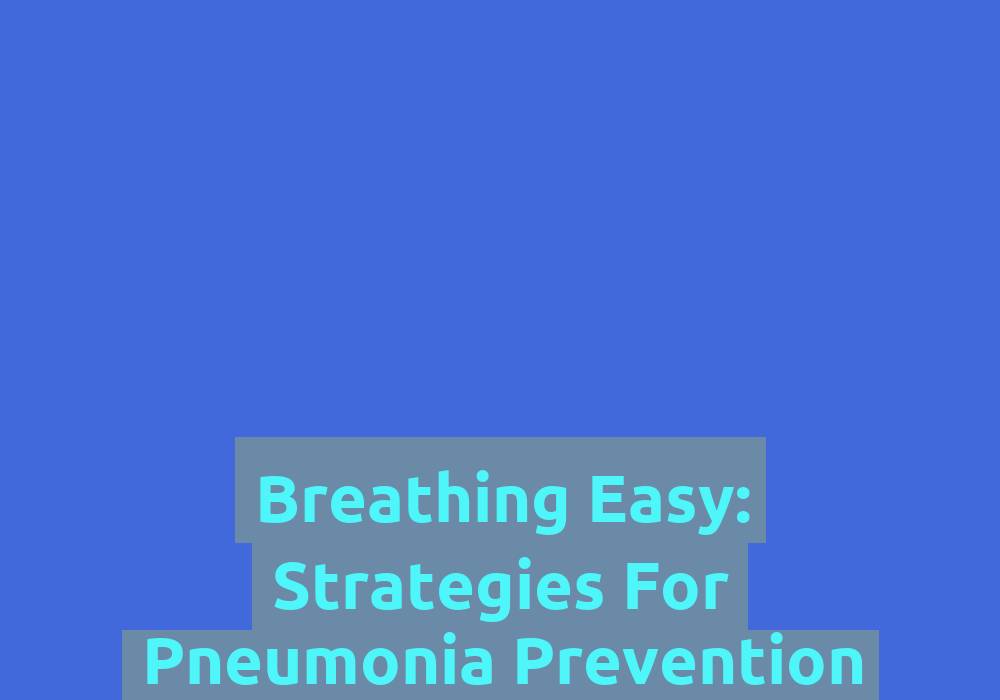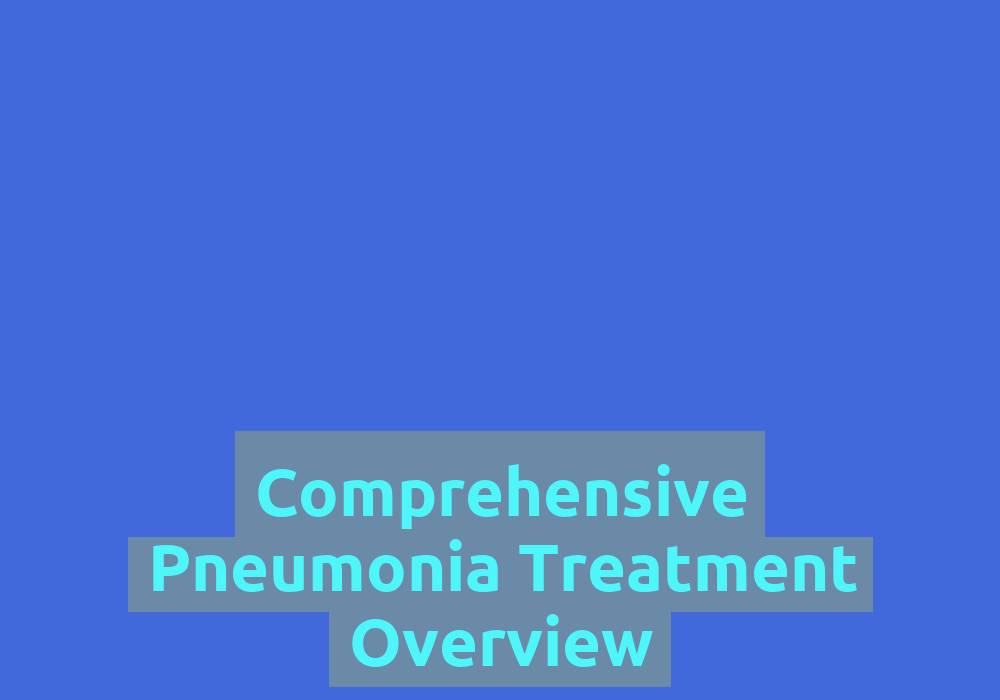
Vaccines play a crucial role in protecting individuals from various infectious diseases. Among these, conjugate vaccines have emerged as a highly effective tool in the prevention of certain diseases caused by bacteria. By combining a weak antigen with a strong antigen, conjugate vaccines enhance the body’s immune response, offering lifelong benefits. In this article, we will explore the numerous advantages and long-term protection conferred by conjugate vaccines.
What are Conjugate Vaccines?
Conjugate vaccines are a type of immunization that utilize a combination of weak antigens and carrier proteins to enhance the immune response to specific diseases. The weak antigen is usually derived from the bacteria responsible for the disease, while the carrier protein helps stimulate a strong immune response. This unique combination allows the immune system to recognize and remember the pathogen, building immunity that can last a lifetime.
Strengthening the Immune System
Conjugate vaccines work by leveraging the body’s immune system to provide long-lasting protection against targeted diseases. The weak antigen present in the vaccine acts as a trigger, alerting the immune system and prompting it to mount a response. Simultaneously, the carrier protein enhances this response by stimulating the production of antibodies and activating immune cells. By combining these elements, conjugate vaccines effectively strengthen the immune system’s ability to recognize and neutralize specific pathogens, providing a lifelong defense.
Building Memory and Long-Term Immunity
One of the key advantages of conjugate vaccines is their ability to create memory cells within the immune system. Memory cells are specialized immune cells that “remember” previous encounters with pathogens. Once the body has been exposed to a specific antigen through vaccination, memory cells are formed and stored. These cells remain vigilant, ready to quickly recognize and respond to the pathogen if it is encountered again in the future. This memory response is crucial in providing lifelong immunity against diseases, as the immune system can mount a rapid and effective defense.
Enhanced Vaccine Efficacy
Conjugate vaccines are designed to overcome the challenges posed by weak antigens that may not elicit a strong immune response on their own. By coupling the weak antigen with a carrier protein, the vaccine enhances the overall efficacy of the immune response. The carrier protein helps to elicit a more robust, specific, and long-lasting immune response compared to traditional vaccines. This improved efficacy ensures that the immune system is equipped to combat the targeted disease effectively, reducing the risk of infection and its associated complications.
Lifelong Protection
One of the key benefits of conjugate vaccines is their ability to provide lifelong protection against certain bacterial infections. By generating a robust and long-lasting immune response, these vaccines help prevent the occurrence of diseases even years after vaccination. This is particularly important for individuals who are at a higher risk of severe complications or those living in regions with a higher incidence of the targeted diseases.
Sustained Immune Response
Conjugate vaccines stimulate a sustained immune response that offers protection throughout an individual’s life. The unique combination of weak antigens and carrier proteins ensures that the immune system remains prepared to defend against specific pathogens for an extended period. This sustained immune response is particularly crucial for diseases that can have lifelong consequences or reoccur later in life. By providing lifelong protection, conjugate vaccines significantly reduce the burden of illness and improve overall health outcomes.
Protection Against Evolving Strains
Bacteria can evolve and develop new strains over time, potentially rendering previously effective vaccines less effective. However, conjugate vaccines have shown remarkable efficacy in providing protection against evolving strains of bacteria. The combination of weak antigens and carrier proteins in these vaccines allows the immune system to recognize various strains of the pathogen, preventing infections caused by both existing and newly emerging strains. This adaptability ensures lifelong protection against a broad spectrum of pathogens, even as they evolve.
Long-Term Cost Savings
Investing in conjugate vaccines can yield substantial long-term cost savings for individuals and healthcare systems. By preventing diseases that can result in expensive hospitalizations, treatments, and long-term complications, conjugate vaccines offer a cost-effective solution. The lifelong protection conferred by these vaccines reduces the need for repeated vaccinations or booster shots, further contributing to cost savings. Additionally, the prevention of severe complications and disabilities associated with targeted diseases alleviates the economic burden on individuals, families, and society as a whole.
Prevention of Meningitis
Conjugate vaccines have played a vital role in the prevention of meningitis, a potentially life-threatening infection that affects the membranes surrounding the brain and spinal cord. Meningococcal conjugate vaccines, for example, provide effective protection against meningococcal meningitis, which is caused by Neisseria meningitidis bacteria. By immunizing individuals against the major strains of this bacteria, conjugate vaccines significantly reduce the risk of meningitis and its devastating consequences.
Targeting Multiple Meningococcal Strains
Meningococcal conjugate vaccines are designed to protect against multiple strains of Neisseria meningitidis, the bacteria responsible for meningococcal meningitis. These vaccines typically cover the most common strains that cause infections worldwide. By targeting a wide range of strains, conjugate vaccines offer comprehensive protection against meningococcal meningitis, reducing the overall disease burden and minimizing the risk of outbreaks.
Prevention of Secondary Infections
Meningococcal meningitis can lead to secondary infections, such as sepsis or pneumonia, which can be life-threatening. Conjugate vaccines not only prevent meningitis itself but also reduce the risk of these secondary infections. By targeting the bacteria responsible for meningococcal meningitis, conjugate vaccines effectively interrupt the transmission chain, preventing the spread of the bacteria and the subsequent development of severe complications.
Protecting High-Risk Populations
Certain populations, such as college students, military recruits, and individuals living in crowded conditions, are at a higher risk of meningococcal meningitis. Conjugate vaccines have been instrumental in protecting these high-risk populations by providing effective immunization against the targeted strains of Neisseria meningitidis. By reducing the incidence of meningococcal disease in these groups, conjugate vaccines help prevent outbreaks and safeguard vulnerable individuals from potential complications and long-term health consequences.
Pneumococcal Disease Prevention
Pneumococcal conjugate vaccines have revolutionized the prevention of pneumococcal disease. These vaccines target Streptococcus pneumoniae, a bacterium responsible for causing pneumonia, ear infections, sinusitis, and other respiratory infections. By preventing pneumococcal infections, conjugate vaccines have not only reduced the burden of illness but also lowered the rates of hospitalizations and deaths associated with these diseases.
Comprehensive Protection Against Pneumococcal Strains
Pneumococcal conjugate vaccines provide protection against a wide range of strains of Streptococcus pneumoniae. These vaccines typically cover the most prevalent and virulent strains responsible for pneumococcal diseases. By targeting multiple strains, conjugate vaccines ensure comprehensive protection against pneumococcal infections, reducing the risk of complications and improving overall health outcomes.
Prevention of Pneumonia and Respiratory Infections
Pneumonia is a leading cause of morbidity and mortality worldwide, particularly among vulnerable populations such as young children, older adults, and individuals with weakened immune systems. Conjugate vaccines have proven highly effective in preventing pneumonia caused by Streptococcus pneumoniae. By immunizing individuals against this bacterium, conjugate vaccines significantly reduce the incidence of pneumococcal pneumonia and associated respiratory infections, leading to improved quality of life and reduced healthcare costs.
Impact on Antibiotic Resistance
Pneumococcal infections are often treated with antibiotics. However, the emergence of antibiotic-resistant strains of Streptococcus pneumoniae poses a significant challenge to the effective treatment of these infections. Conjugate vaccines have the potential to alleviate this problem by preventing pneumococcal infections altogether. By reducing the overall incidence of infections, conjugate vaccines indirectly contribute to the mitigation of antibiotic resistance, ensuring that antibiotics remain effective in treating other bacterial infections.
Haemophilus Influenzae Type B (Hib) Prevention
Another significant benefit of conjugate vaccines is the prevention of Haemophilus influenzae type B (Hib) infections. Hib is a bacterium that can cause severe diseases such as meningitis, pneumonia, and epiglottitis in young children. By including the Hib antigen in conjugate vaccines, immunization programs have successfully reduced the incidence of Hib-related diseases, protecting children during their vulnerable years and even throughout adulthood.
Effective Prevention of Hib Diseases
Conjugate vaccines targeting Haemophilus influenzae type B have been highly effective in preventing Hib-related diseases. By stimulating a strong immune response against the Hib bacterium, these vaccines significantly reduce the occurrence of meningitis, pneumonia, epiglottitis, septic arthritis, and other invasive diseases caused by Hib. This prevention is particularly crucial during early childhood when children are most susceptible to severe complications from Hib infections.
Impact on Childhood Mortality
Before the introduction of conjugate vaccines, Hib infections were a leading cause of childhood mortality globally. By including the Hib antigen in routine immunization programs, conjugate vaccines have played a pivotal role in reducing the incidence of Hib-related deaths. The widespread use of these vaccines has resulted in a substantial decline in childhood mortality due to Hib diseases, saving countless lives and improving overall child health outcomes.
Long-Term Protection Against Hib
Conjugate vaccines not only provide immediate protection against Hib diseases but also confer long-term immunity. By generating memory cells within the immune system, these vaccines ensure that individuals remain protected against Hib infections well into adulthood. This long-term protection is crucial, as Hib can still cause severe diseases in older age groups. By preventing Hib infections throughout life, conjugate vaccines contribute to the overall health and well-being of individuals, reducing the burden on healthcare systems and society as a whole.
Combination Vaccines
Conjugate vaccines are often combined with other antigens to create combination vaccines. These combination vaccines offer protection against multiple diseases with a single shot, simplifying the immunization process and improving vaccine coverage rates. For instance, the pentavalent vaccine combines antigens against diphtheria, tetanus, pertussis, hepatitis B, and Hib, providing comprehensive protection against these diseases and reducing the number of individual vaccines required.
Simplifying Immunization Schedules
Combination vaccines have greatly simplified immunization schedules for individuals of all ages. By incorporating multiple antigens into a single shot, these vaccines allow for the administration of multiple vaccines in a single clinic visit. This simplification benefits individuals, healthcare providers, and immunization programs by reducing the number of visits and injections required. Additionally, combination vaccines help ensure that individuals receive all necessary vaccinations, increasing vaccine coverage rates and improving overall population immunity.
Improved Vaccine Compliance
The use of combination vaccines has been shown to improve vaccine compliance rates, particularly among children and their caregivers. By reducing the number of individual vaccines and injections, combination vaccines minimize the discomfort and anxiety associated with multiple shots. This improved experience increases acceptance and willingness to vaccinate, resulting in higher vaccination rates and better protection against targeted diseases. The convenience and efficiency of combination vaccines contribute to achieving optimal immunization coverage and public health goals.
Cost-Effectiveness
Combination vaccines offer significant cost savings compared to administering individual vaccines separately. By combining multiple antigens into a single formulation, the production, distribution, and administration costs are reduced. This cost-effectiveness benefits both healthcare systems and individuals, making vaccination programs more sustainable and accessible. Additionally, the streamlined logistics associated with combination vaccines reduce the burden on healthcare providers and contribute to efficient resource allocation in public health efforts.
Herd Immunity
Conjugate vaccines not only provide direct protection to vaccinated individuals but also contribute to the concept of herd immunity. By immunizing a significant portion of the population, the transmission of diseases can be disrupted, protecting those who are unable to receive the vaccine, such as infants, elderly individuals, or individuals with compromised immune systems. This indirect protection helps prevent the spread of diseases and safeguards vulnerable populations.
Interrupting Disease Transmission
Conjugate vaccines play a crucial role in interrupting the transmission of targeted diseases within communities. By vaccinating a large proportion of individuals, the likelihood of an infected person coming into contact with someone susceptible to the disease is significantly reduced. This interruption in disease transmission breaks the chain of infection, preventing outbreaks and reducing the overall disease burden within a population.
Protecting Vulnerable Populations
Herd immunity provided by conjugate vaccines offers significant protection to vulnerable populations who may not be able to receive certain vaccines. Infants who are too young to be vaccinated, elderly individuals with waning immunity, and those with compromised immune systems depend on the immunity of the surrounding population to stay protected. By reducing the circulation of pathogens in the community, conjugate vaccines safeguard these vulnerable individuals, preventing severe complications and potentially life-threatening infections.
The establishment of herd immunity through widespread vaccination has broader community-wide benefits. As the transmission of targeted diseases is reduced, the overall prevalence of these diseases decreases, resulting in improved public health outcomes. The societal impact includes lower healthcare costs, reduced hospitalizations, and improved quality of life. By contributing to herd immunity, conjugate vaccines play a vital role in promoting the well-being of entire communities and protecting future generations.
Safety and Effectiveness
Conjugate vaccines have been extensively studied and proven to be safe and effective. They undergo rigorous testing and evaluation before being approved for public use. The development of conjugate vaccines has significantly reduced the incidence of targeted diseases, saving countless lives and preventing long-term complications. Adverse reactions to these vaccines are rare and usually mild, emphasizing their overall safety profile.
Rigorous Testing and Evaluation
Conjugate vaccines undergo extensive testing and evaluation during the research and development process. This rigorous approach ensures that safety and effectiveness are paramount considerations. Preclinical studies, clinical trials, and post-marketing surveillance are conducted to assess the vaccine’s safety profile, immunogenicity, and long-term protection. These comprehensive evaluations provide robust evidence that supports the safety and effectiveness of conjugate vaccines, instilling confidence in healthcare providers and the general public.
Monitoring Vaccine Safety
Once conjugate vaccines are approved and implemented, rigorous monitoring systems are in place to continuously assess their safety. Adverse events following immunization (AEFI) surveillance programs actively monitor and investigate any reported adverse reactions. These surveillance systems play a crucial role in identifying and responding to potential safety concerns promptly. Continuous monitoring and evaluation of conjugate vaccines ensure their safety profile remains favorable and any rare adverse events are quickly addressed.
Vaccine Confidence and Public Trust
The safety and effectiveness of conjugate vaccines have contributed to the overall confidence and trust in vaccination programs. Extensive research, comprehensive testing, and ongoing monitoring have shown that the benefits of vaccination far outweigh the risks. The public
- What are conjugate vaccines?
- Conjugate vaccines are a type of immunization that combine weak antigens with carrier proteins to enhance the immune response and provide long-lasting protection against specific diseases.
- How do conjugate vaccines provide lifelong immunity?
- Conjugate vaccines stimulate the production of memory cells within the immune system, which remember previous encounters with pathogens. This memory response allows for a rapid and effective defense if the pathogen is encountered again, providing lifelong immunity.
- What are the advantages of conjugate vaccines compared to traditional vaccines?
- Conjugate vaccines enhance the efficacy of the immune response by coupling weak antigens with carrier proteins. This results in a more robust, specific, and long-lasting immune response compared to traditional vaccines, reducing the risk of infection and its complications.
- How do conjugate vaccines contribute to herd immunity?
- Conjugate vaccines not only provide direct protection to vaccinated individuals but also interrupt the transmission of diseases within communities. By vaccinating a significant portion of the population, the spread of diseases is reduced, protecting those who are unable to receive the vaccine and safeguarding vulnerable populations.



















